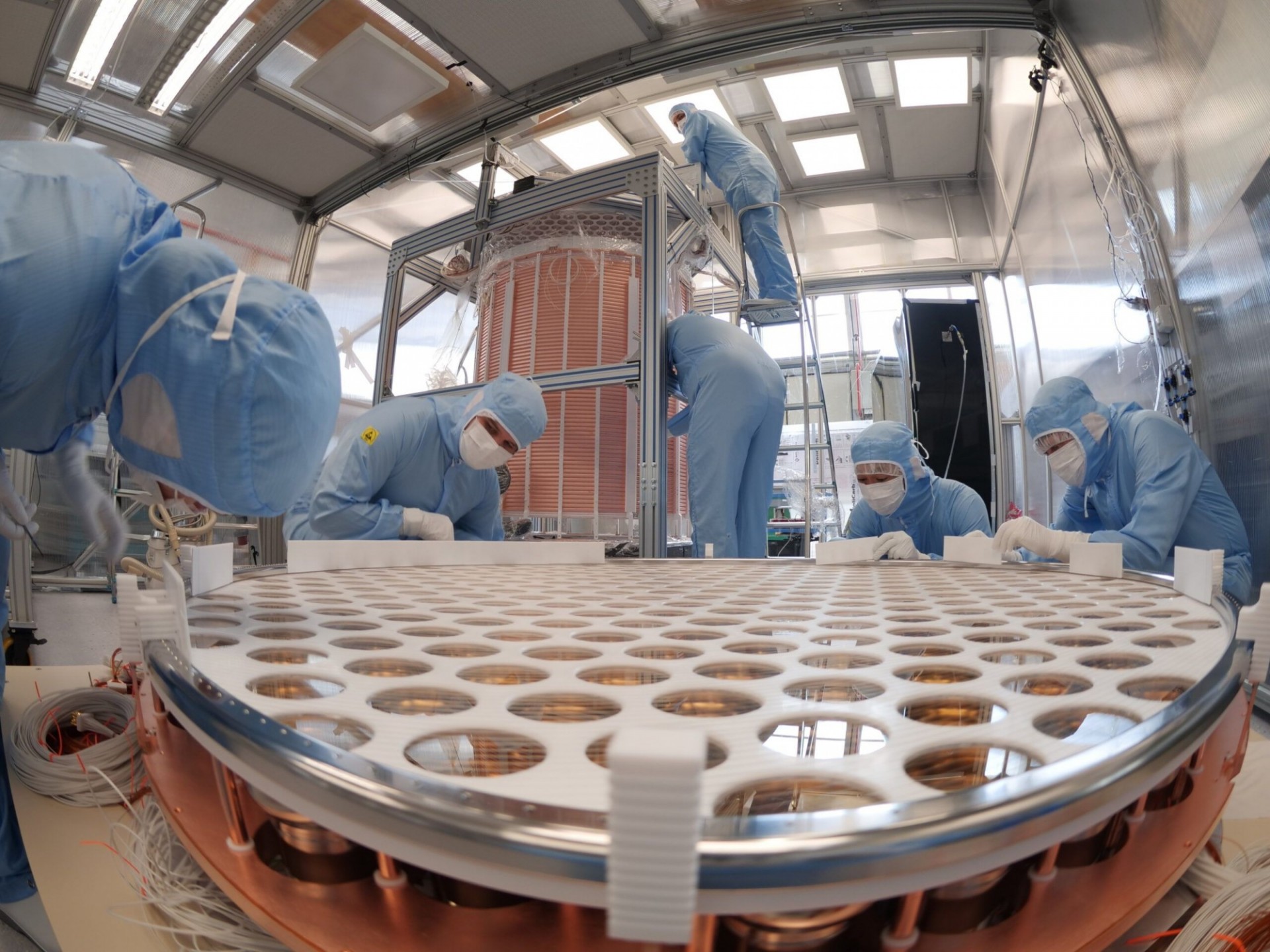First results from a Search for New Physics in Electronic Recoils from XENONnT

XENONnT, the latest detector of the XENON Dark Matter program, shows an unprecedentedly low background which facilitates searches for new, very rare phenomena with high sensitivity. First results clarify an exciting excess observed in the predecessor XENON1T and set strong limits on new physics scenarios.
The XENONnT experiment was designed to look for elusive dark matter particles. The detector holds almost 6000 kg of ultrapure liquid xenon as a target for particle interactions; it is installed inside a water Cherenkov active muon and neutron veto, deep underground at the INFN Laboratori Nazionali del Gran Sasso in Italy. Despite the challenging pandemic situation, XENONnT was constructed and subsequently commissioned between spring 2020 and spring 2021. XENONnT took the first science data over 97.1 days, from July 6 to November 10, 2021.
Experiments of this type require the lowest possible levels of natural radioactivity of any kind, both from sources intrinsically present in the liquid xenon target and from construction materials and the environment. The former, dominated by radon, is the most difficult to reduce and its elimination represents the holy grail of current searches at the sensitivity level of XENONnT. However, the XENON collaboration has been instrumental in reducing radon to an unprecedentedly low-level, thanks to extensive material screening and the successful operation of an online cryogenic distillation column that actively removes radon from the xenon.
Two years ago, the XENON collaboration announced the observation of an excess of electronic recoil events in the XENON1T experiment. The result triggered a lot of interest and many publications since this could be interpreted as a signal of new physics beyond known phenomena. Interactions with electrons in the atomic shell within the liquid xenon from solar axions, neutrinos with an anomalous magnetic moment, axion-like particles, or hypothetical dark sector particles might induce so-called “electronic recoil” signals. Today the XENON collaboration has released the first results from its new and more sensitive experiment, XENONnT, with one-fifth of the electronic recoil background of its predecessor, XENON1T. The absence of an excess in the new data indicates that the origin of the XENON1T signal was trace amounts of tritium in the liquid xenon, one of the hypotheses considered at the time. In consequence, this leads now to very strong limits on new physics scenarios originally invoked to explain an excess.
With this new result, obtained through a blind analysis, XENONnT makes its debut, with an initial exposure slightly larger than 1 tonne x year. The existing data are being further analyzed to search for weakly interacting massive particles (WIMPs), one of the most promising candidates of Dark Matter in the Universe. XENONnT is meanwhile collecting more data, aiming for even better sensitivity as part of its science program for the next years.
Elena Aprile, Centennial Professor of Physics at Columbia University, is the founder of the XENON Dark Matter Project and its Spokesperson. The Columbia group, with support from the National Science Foundations, has led the development of the family of XENON detectors with particular responsibilities in their cryogenics and purification systems. For the upgrade of XENON1T to XENONnT, Aprile's group delivered a novel liquid purification system to efficiently remove electronegative impurities from the 8500 kg of liquid xenon used to fill the XENONnT cryostat. The group also played a key role in the analysis of the first science data with Dr. Mora, Aprile's postdoc as one of the Analysis Coordinators, and Dr. Ye, another one of Aprile's postdocs as one of the corresponding authors of the first results paper.
Picture: Assembly of the XENONnT detector in the cleanroom at LNGS
Picture credit: "Luigi Di Carlo for the XENON collaboration"
Link to the paper (pdf) and to the slides (pdf) as they were presented at the IDM conference.
This article was originally published by The Xenon Experiment.